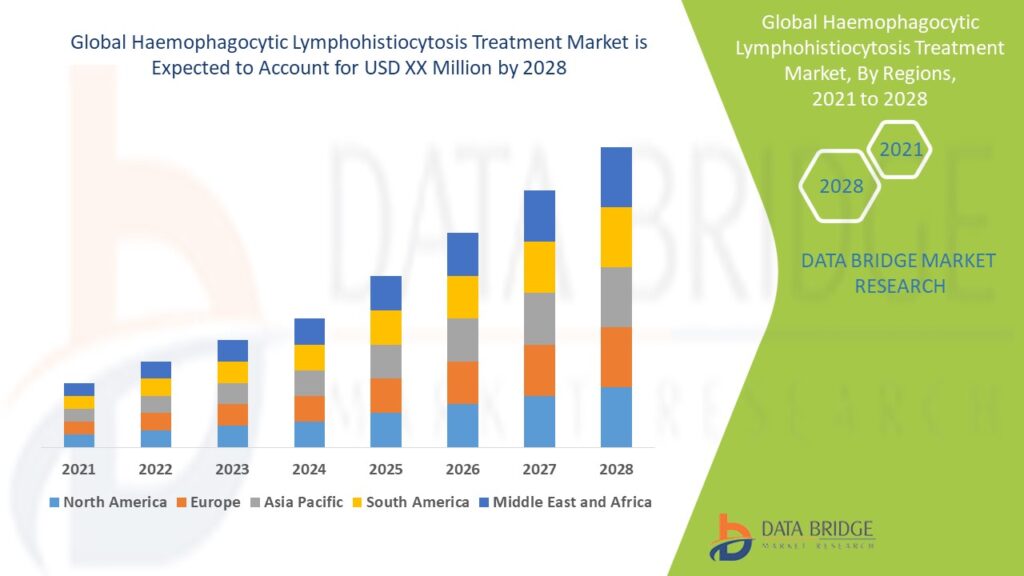Introduction
Haemophagocytic Lymphohistiocytosis (HLH) is a rare but potentially fatal hyperinflammatory syndrome characterized by excessive immune activation and cytokine release. It can be classified as either primary (familial) or secondary, with the latter often triggered by infections, malignancies, or autoimmune disorders. Given its severity and diagnostic complexity, HLH demands prompt and aggressive treatment.
The HLH treatment market is growing steadily as awareness of the condition improves, diagnostic tools advance, and therapeutic innovations emerge. This article provides a detailed overview of the HLH treatment market, covering current therapies, market dynamics, emerging trends, and future opportunities.
Market Overview
As of 2024, the global Haemophagocytic Lymphohistiocytosis treatment market is estimated to be valued at USD 300–400 million, with projections indicating growth at a CAGR of approximately 7–9% over the next decade. Though small compared to other rare disease markets, HLH presents high unmet clinical needs, making it an attractive area for orphan drug development.
Key Market Drivers
-
Increasing recognition and diagnosis of HLH worldwide
-
Growing pipeline of targeted immunotherapies and biologics
-
Expanded research in gene therapy and hematopoietic stem cell transplantation (HSCT)
-
Government incentives for orphan drug development
Current Treatment Landscape
Treatment for HLH aims to suppress hyperinflammation, eradicate underlying triggers, and restore immune system balance. Commonly used therapies include:
1. Immunosuppressive Therapy
-
Dexamethasone: A corticosteroid used to reduce immune system activity
-
Etoposide: A chemotherapeutic agent that targets activated T cells and macrophages
The HLH-94 protocol (and later HLH-2004) remains a standard frontline regimen combining dexamethasone, etoposide, and cyclosporine A.
2. Hematopoietic Stem Cell Transplantation (HSCT)
-
The only curative option for familial HLH or cases unresponsive to pharmacological treatment.
-
Transplant-related complications and donor availability remain major challenges.
3. Biologics and Targeted Therapies
-
Emapalumab: The first FDA-approved treatment for primary HLH. It is an anti-interferon gamma monoclonal antibody developed by Sobi (Swedish Orphan Biovitrum). It has shown efficacy in patients refractory to standard therapy.
-
Ruxolitinib: A JAK1/2 inhibitor being explored for hyperinflammation management in secondary HLH.
-
Other biologics under investigation include anakinra (IL-1 receptor antagonist) and tocilizumab (IL-6 inhibitor).
Market Segmentation
By Type
-
Primary HLH
-
Secondary HLH (associated with infections, cancers, autoimmune diseases)
By Therapy
-
Pharmacologic (immunosuppressants, biologics)
-
Transplantation (HSCT)
-
Supportive care (IVIG, antibiotics, antivirals)
By End User
-
Hospitals
-
Specialty clinics
-
Academic research centers
Regional Insights
North America
The U.S. dominates the HLH treatment market due to:
-
Higher awareness and diagnosis rates
-
Availability of approved therapies (e.g., emapalumab)
-
Strong healthcare infrastructure and reimbursement policies
Europe
Countries like Germany, France, and the UK are investing in HLH research, with early access programs supporting drug uptake for rare diseases.
Asia-Pacific
China, Japan, and India show rising potential due to expanding healthcare infrastructure, although underdiagnosis remains a barrier.
Pipeline and Emerging Therapies
The HLH pipeline is robust with numerous investigational drugs at various stages of clinical development. Some notable candidates include:
-
Lenzilumab – A monoclonal antibody targeting GM-CSF
-
Ruxolitinib – Already used off-label in some HLH cases; clinical trials are ongoing for formal indications
-
Gene therapy – Preclinical research is exploring gene correction strategies for familial HLH mutations (e.g., PRF1, UNC13D, STXBP2)
Challenges in the HLH Treatment Market
1. Diagnostic Complexity
Symptoms of HLH mimic other conditions (e.g., sepsis, leukemia), often leading to delayed diagnosis and treatment initiation.
2. High Treatment Costs
Biologics like emapalumab can be prohibitively expensive, and HSCT procedures cost hundreds of thousands of dollars, limiting accessibility.
3. Limited Awareness Among Clinicians
Given HLH’s rarity, many physicians are unfamiliar with its clinical presentation, especially in community settings.
4. Adverse Effects and Mortality
Even with aggressive treatment, HLH has a high mortality rate. Etoposide, for instance, carries risks of myelosuppression and secondary malignancies.
Future Opportunities
Orphan Drug Incentives
Governments and regulatory agencies offer market exclusivity, grants, and tax credits for orphan drug development, encouraging companies to invest in HLH therapies.
Personalized Medicine
Genetic testing and biomarker profiling could help tailor treatments based on HLH subtypes or individual immune signatures.
Artificial Intelligence in Diagnosis
AI-based algorithms are being developed to identify HLH from electronic health records and lab patterns, potentially enabling earlier detection.
Expanded Use of Biologics
Off-label and investigational use of anti-cytokine therapies is likely to grow, especially in managing cytokine storms and HLH-like syndromes in COVID-19 and CAR-T cell therapies.
Competitive Landscape
Key players in the HLH treatment market include:
-
Swedish Orphan Biovitrum (Sobi) – Market leader with emapalumab
-
Incyte Corporation – Developer of ruxolitinib
-
Novartis – Involved in clinical trials for biologics
-
Pfizer, Roche, and Regeneron – Potential players in IL-1, IL-6, and other cytokine-targeting therapies
-
Bluebird Bio and Orchard Therapeutics – Exploring gene therapy options for rare immune disorders
Conclusion
Though still a niche market, the treatment landscape for Haemophagocytic Lymphohistiocytosis is evolving rapidly. Improved diagnostics, greater clinical awareness, and novel therapies are helping to improve survival rates for this devastating condition. As investment in rare disease research continues and biologics become more accessible, the HLH treatment market is poised for steady growth in the years ahead.
Get more Details


